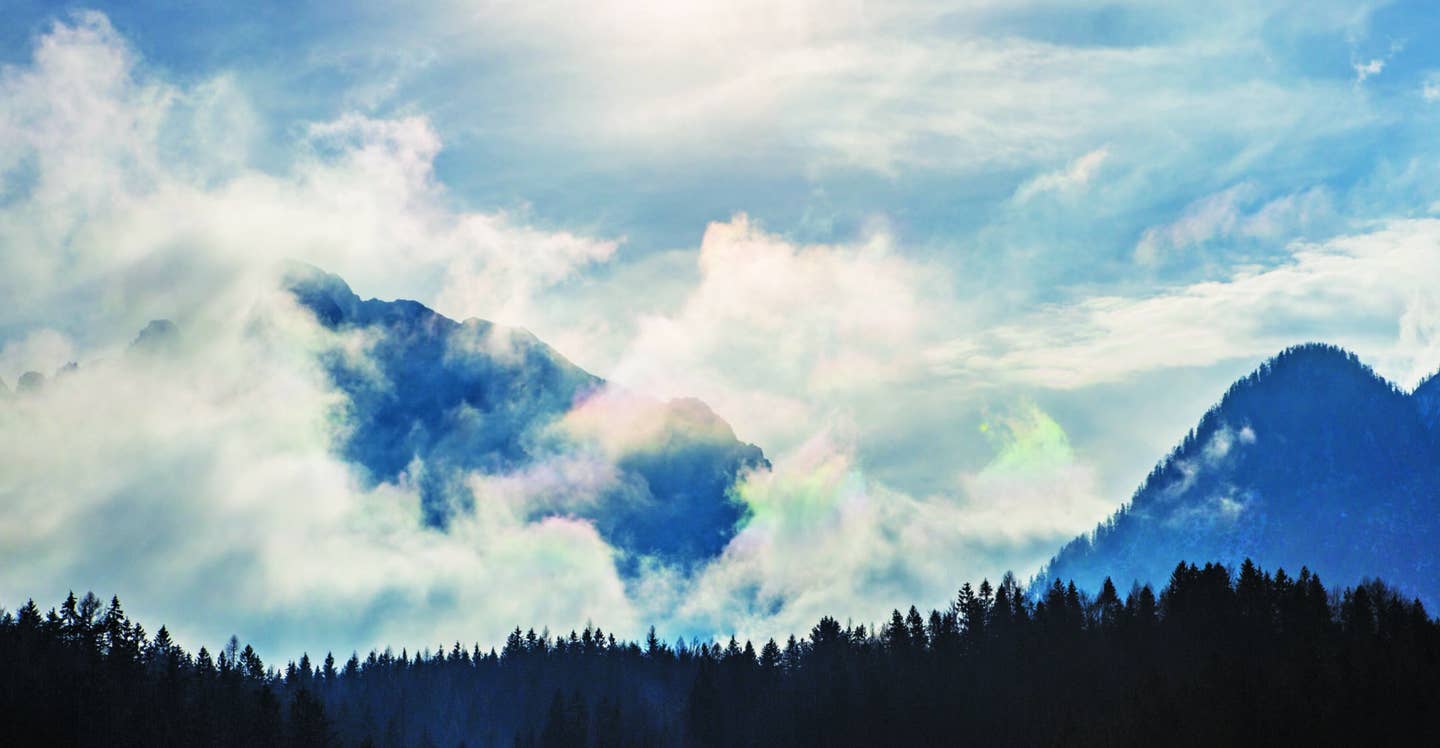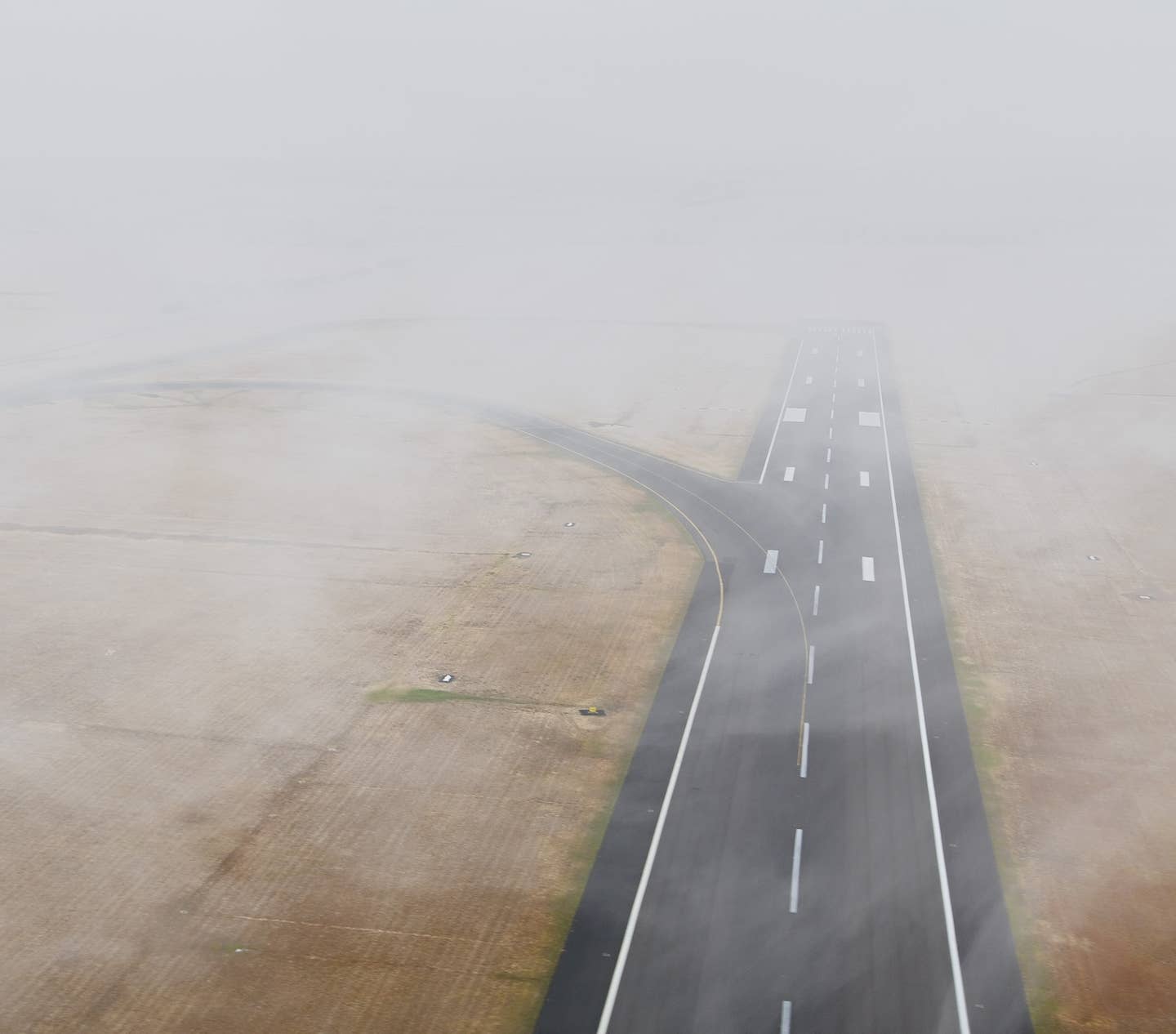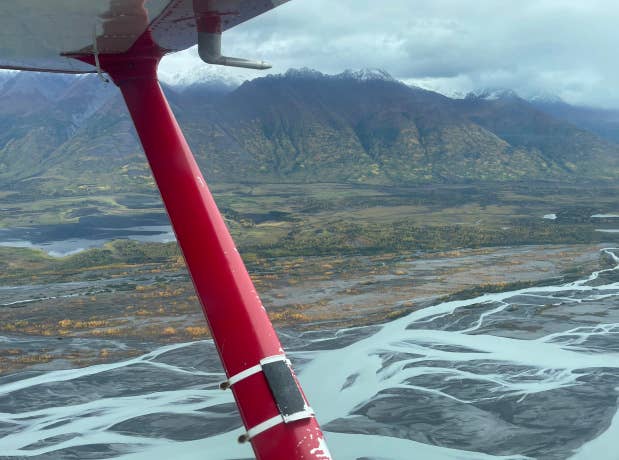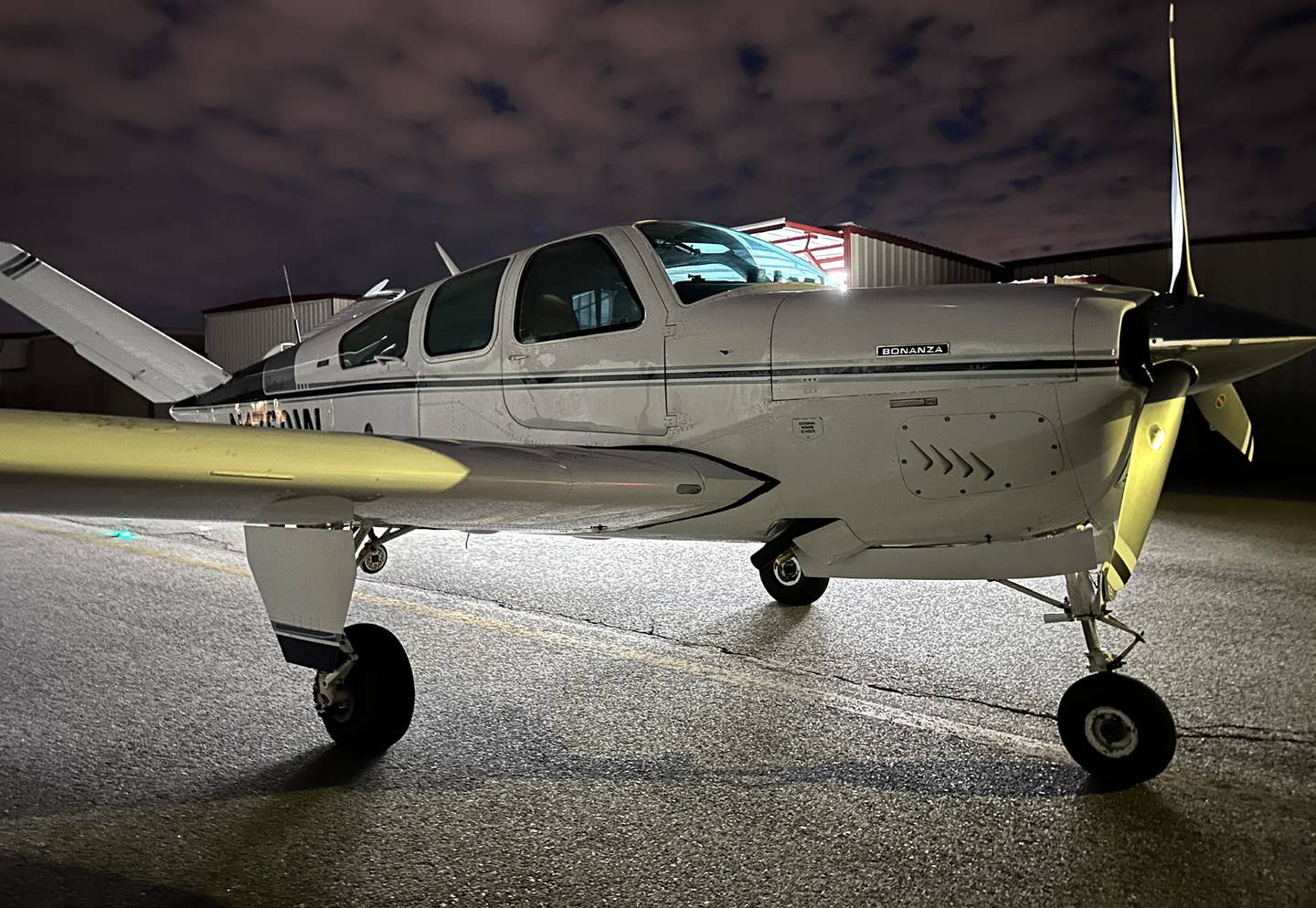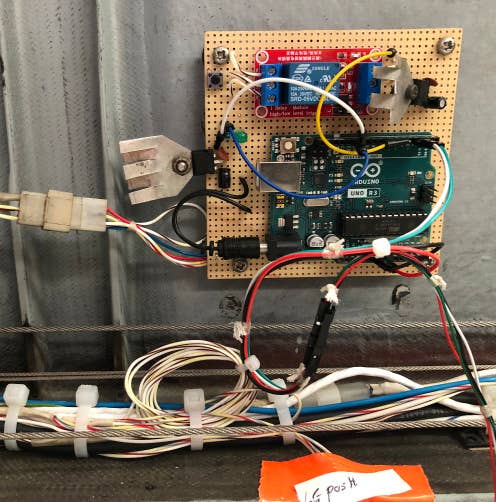A Leg-Stretching Jaunt to the Golden State
There’s a lot to love in California, particularly for pilots and those who enjoy outdoor adventure.
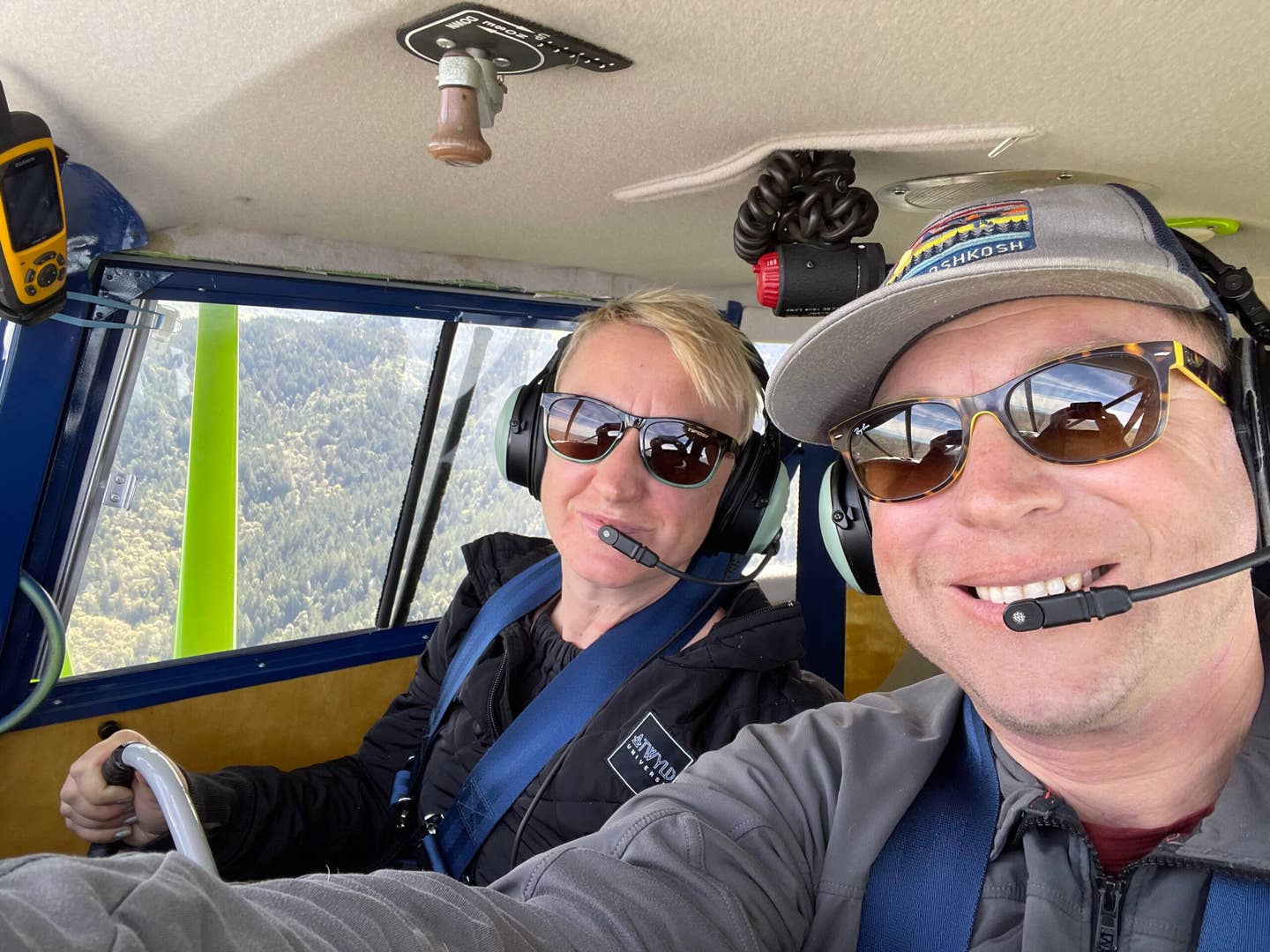
The author enjoys a scenic local birthday flight with longtime friend and fellow pilot Sylvia Grandstaff. [Courtesy: Sam Weigel]
When Dawn and I decided to take our Stinson 108 to Alaska this summer, it was with the knowledge that we’d had only 20 months of fairly trouble-free ownership, during which time we’ve made a number of updates to modernize the airplane and make it more suitable for cross-country travel.
My one reservation was that our 78-year-old Franklin 150 engine had been freshly overhauled before purchase, and, between Pacific Northwest weather and building our hangar/living quarters, we’d only put 100 hours on it. By comparison, we owned our previous Piper Pacer for over 18 months and flew it some 220 hours.
If you're not already a subscriber, what are you waiting for? Subscribe today to get the issue as soon as it is released in either Print or Digital formats.
Subscribe NowThe difference was that we made a number of ambitious cross-countries with the Pacer, while the Stinson has remained largely local. Infant mortality is a thing with newly overhauled engines—even those of more recent manufacture than the Franklin—and I was leery of venturing into the northern wilderness without a decent proving run.
My own cross-country-making skills were also in need of a brush-up, having not been really exercised since we sold the Pacer in 2016. Yes, my day job involves regularly flogging Boeing 737s across the continent. But ensconced in the flight levels and enjoying performance and equipment that afford something approaching all-weather capability, those skills are practically irrelevant to the experience of being down in the rocks and the clay, trying to make serious miles in a VFR-only, single-engine aircraft of limited performance.
- READ MORE: Love Affair: The Last Frontier Awaits
The information-gathering and decision-making processes are entirely different, and the required degree of self-reliance much greater. These skills atrophy with disuse. The reality is that on marginal days in the Pacific Northwest, I mostly just don’t fly the Stinson, and so I haven’t had a lot of recent practice in making the fine calls. My brain, like my airplane, needed a proving run to get up to speed before tackling the north country.
Longtime readers may recall past columns about our friends Sylvia and Hugh Grandstaff, previously of Texas and Alabama and the various forts and bases associated with Sylvia’s 13-year Army career as a CH-47 pilot. Since Sylvia left the Army a few years ago, the Grandstaffs moved to California, where Hugh now flies for Cal Fire. Most recently they bought a 70-acre parcel several hours north of San Francisco, and Dawn and I have really been looking forward to seeing it. Fortunately, there’s a small airport nearby in Boonville, California (D83). With a five-day stretch of time off work around my birthday in mid-April, it made the perfect destination for a leg-stretching, cross-country flight.
Weather delayed our departure on Monday, April 15, until after noon. Our airstrip sits just in the lee of 1,800-foot Green Mountain, and we frequently have low ceilings even after nearby Bremerton National (KPWT) is reporting good VFR. Eventually we were able to duck out under a 1200-foot ceiling for the first 5 miles and had great weather for the rest of the day with mostly clear skies, unlimited visibility, and a slight tailwind.
- READ MORE: Finding That Right Pilot Buddy to Bid With
Our first leg was a short one to Chehalis-Centralia (KCLS) for cheap gas, followed by a lovely 250-mile cruise down to Roseburg (KRBG) in west central Oregon. There was still over two hours of daylight remaining when we departed Roseburg, and I considered continuing to Crescent City, California (KCEC), but the marine layer along the coast had been persistent for several days and, despite a favorable forecast, the temperature/dew point spread was uncomfortably close.
Heading across the formidable Klamath Mountains to arrive at a potentially deteriorating destination with fading daylight and marginal gas to get back is the sort of thing that makes my antennae tingle. Instead, we made a scenic, half-hour hop to the mountain town of Grants Pass, Oregon (3S8) for the night.
The friendly folks at Pacific Aviation Northwest loaned us a trusty airport car and directed us to the best dog-friendly hotel in town. We enjoyed a warm, beautiful evening, and I planned the following day’s flight to Crescent City via U.S. Highway 199 and then down the coast to Ukiah and Boonville following U.S. 101. This route, which I preferred for being shorter and more scenic than California’s Central Valley, was completely dependent on the coastal weather. Indeed, the marine layer did in fact move back over Crescent City around sundown. The new TAF reflected that but still claimed early clearing by midmorning.
It was not to be. Despite a relaxed breakfast and a fashionably late appearance at the Grants Pass airport, the coastal METARs depicted a once-again tenacious marine layer. And furthermore, there was a completely unforecast broken layer a couple thousand feet over Grants Pass, which, problematically, was visibly obscuring our intended departure corridor to the southwest.
Time for Plan B. We instead departed southeast toward Medford, Oregon, soon left the aberrant ceiling behind, and enjoyed a gorgeous flight up the Rogue River Valley over the Siskiyou Pass and past Mount Shasta. By the time we landed in Red Bluff, California (KRBL) for gas, the coast had cleared up nicely, making for a stress-free, one-hour flight across the Coastal Range to quaint little Boonville (D83), with its 2,800-by-50-foot paved runway tucked into a scenic valley.
Hugh met us and helped push the faithful Stinson into his rented hangar. Total flight time southbound was just over seven hours.
We had a fantastic couple days with the Grandstaffs and fell in love with their impossibly scenic off-grid homestead high up a golden, oak-peppered ridge overlooking the Rancheria Creek watershed. Our dog Piper had a great time running around the ranch with the Grandstaff’s deaf, three-legged rescue pup, Dove. We went hiking, drove out to the coast, went flying in the Stinson (incredibly, the first time Sylvia and I have flown together in our long friendship), and shared an unexpectedly fine meal at an unpretentious gem of a restaurant in Boonville. It was a special birthday spent with treasured friends.
Several years of my early career were spent living in and flying all around California, and every time I come back I’m absolutely gobsmacked at how fantastic it is—especially the northern half of the state. There’s a tendency for outsiders to decry the congestion, high cost of living, supposedly suffocating regulatory structure—“Californication”—and I won’t deny that the most crowded areas hold little appeal to me. But California is an enormous and tremendously varied state, more akin to a medium-sized country, one that would take a lifetime to fully explore.
There’s a lot to love in California, particularly for pilots and those who enjoy outdoor adventure, and a surprising portion of it is lightly populated and not so terribly expensive. The Grandstaffs are not wealthy, but simply by putting down roots outside of commuting distance from San Francisco (and putting a lot of sweat equity into their land), they could afford a fairly large and beautiful spread of property. Well done, you two.
An approaching low-pressure system forecast to make landfall on Friday prompted me to move up our northbound departure by a day, and we were rewarded with fine weather and a light tailwind in southerly flow. This time we were able to take the coastal route to Grants Pass, stopping in Little River, California (KLLR) to top up on fuel, then cruising up the rugged shoreline to Crescent City, and climbing up and over the redwood forests of the Klamath Range.
From Grants Pass we retraced our route to Chehalis-Centralia and finally back to our home grass strip, where a gusty north wind set up a potentially sketchy landing on seldom-used, downhill-sloped Runway 30. I decided to make a low inspection pass and beat a retreat to Bremerton National if things got too sporty. As it turned out, the challenging approach through a small notch in the tall pines lining the threshold went perfectly, and once below the tree line in smooth air, I found myself in perfect position to land in the touchdown zone—so I did. Total time northbound was six hours.
The plane worked great, and the engine ran smoothly throughout the trip, with fuel burns of 9 to 9.5 gph (typical of the Franklin, which is thirstier than an equivalent Lycoming O-320 or Continental O-300) and true airspeed averaging 105 mph. I gained some useful, real-world performance data for max gross weight operations, the weather provided a few decision-making opportunities, and I got practice in filing, activating and closing VFR flight plans again.
In short, our jaunt to California and back was exactly the sort of cross-country proving run I had in mind. I returned with renewed confidence in the plane and my own skills,and looked forward to our Alaska flying adventure with eager anticipation.
This column first appeared in the September Issue 950 of the FLYING print edition.

Sign-up for newsletters & special offers!
Get the latest FLYING stories & special offers delivered directly to your inbox


